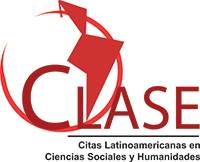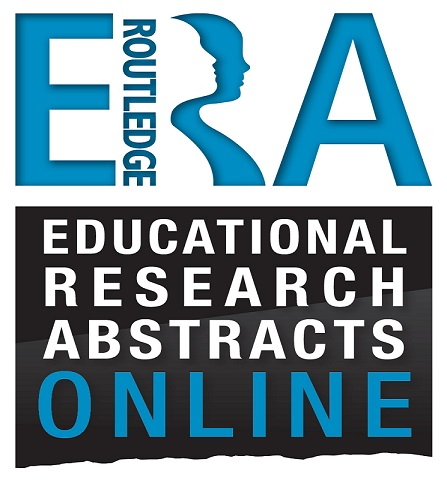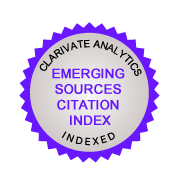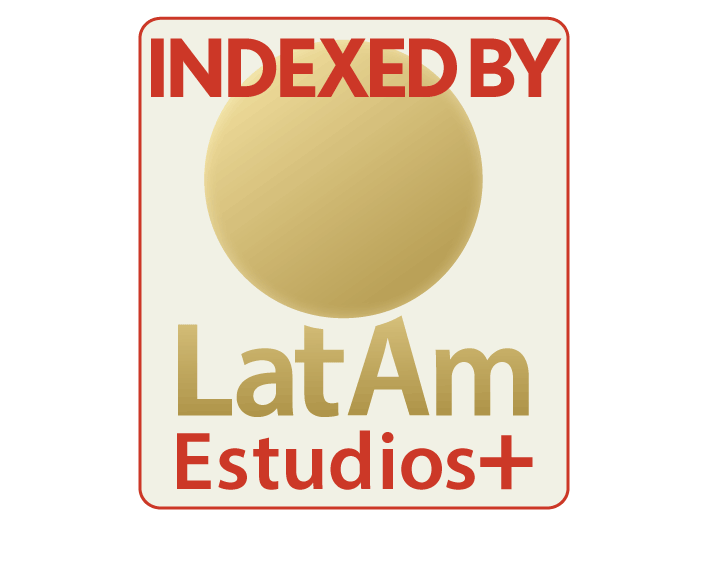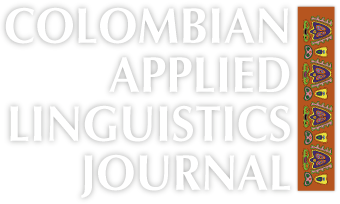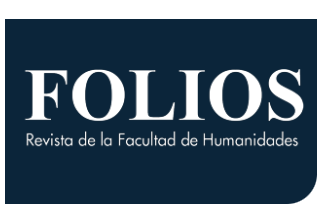Critical Socio-Cultural Elements of the Intercultural Endeavour of English Teaching in Colombian Rural Areas
Elementos críticos socioculturales de la labor de enseñar inglés en áreas rurales colombianas
DOI:
https://doi.org/10.15446/profile.v16n2.40423Keywords:
Rural areas, rural education, sociocultural factors, teaching English as a foreign language. (en)Área rural, educación rural, enseñanza del inglés como lengua extranjera, factores socioculturales. (es)
PROFILE
Issues in Teachers' Professional Development
Vol. 16, No. 2, October 2014 ISSN 1657-0790 (printed) ISSN 2256-5760 (online)
doi: https://doi.org/10.15446/profile.v16n2.40423
Critical Socio-Cultural Elements of the Intercultural Endeavour of English Teaching in Colombian Rural Areas
Elementos críticos socioculturales de la labor de enseñar inglés en áreas rurales colombianas
Sandra Ximena Bonilla*
Universidad Distrital Francisco José de Caldas, Bogotá, Colombia
Ferney Cruz-Arcila**
King’s College London, London, United Kingdom
*ximenabvonilla@gmail.com
**cruzferney@yahoo.com
This article was received on October 22, 2013, and accepted on March 25, 2014.
This is an Open Access article distributed under the terms of the Creative Commons license Attribution-NonCommercial-NoDerivatives 4.0 International License. Consultation is possible at http://creativecommons.org/licenses/by-nc-nd/4.0/.
This article reports a study done with five English language teachers in Colombian rural areas. Questionnaires and interviews were used to see how these teachers understand their professional practice considering the contextual features of their regional workplaces. Amongst the findings, we noticed that these teachers have to mediate between local and global tensions and also deal with socio-cultural matches and mismatches in their labours. It is hoped this work raises awareness of critical socio-cultural factors involved in the teaching of English in rural settings and of the complexity of its intercultural dimension.
Key words: Rural areas, rural education, sociocultural factors, teaching English as a foreign language.
Este artículo reporta los hallazgos de una exploración sistemática hecha con cinco profesores de inglés en áreas rurales. Se usaron cuestionarios y entrevistas para vislumbrar la forma como ellos entienden su práctica profesional considerando las características contextuales de las regiones donde trabajan. Dentro de los hallazgos notamos que los profesores tienen que mediar entre tensiones globales y locales; además, tienen que enfrentar discordancias y concordancias socioculturales en su labor. Se espera que este trabajo cree conciencia sobre factores críticos socioculturales involucrados en la enseñanza del inglés en zonas rurales y sobre la complejidad de su dimensión intercultural.
Palabras clave: área rural, educación rural, enseñanza del inglés como lengua extranjera, factores socioculturales.
Introduction
Since 2004 when the National Programme of Bilingualism (NPB) in Colombia started, educational institutions all over the country have been undertaking actions to try to reach the goals the Programme has set out. Schools and universities have implemented new strategies, have increased the number of hours to learn the subject matter, and have even included dramatic changes in their curricular organization. Likewise, the aforementioned linguistic policy has generated a series of social and cultural implications by mandating every Colombian citizen in rural and urban areas to be instructed in English. In this context, the role language teachers play in the national educational system is paramount. Therefore, it is necessary to fully understand the significance of the teachers’ work.
As a result of the importance being attributed to English language teaching, a great range of different studies have been conducted in recent years dealing with issues such as language teaching methodologies (López & Bernal, 2009; Pineda & Frodden, 2008; Viáfara, 2011), interculturality (Olaya & Gómez, 2013), a recent trend in information and communication technologies (ICT) (Rodríguez & Hine, 2009), as well as classroom interaction and discourse analysis (Castañeda-Peña, 2008). Similarly, some other research actions have been taken regarding the NPB, including its limitations and implications (Cárdenas, 2006; Guerrero, 2008; Sánchez & Obando, 2008). Yet little attention has been paid to the ways in which foreign language teaching has been dealt with in rural areas or to the ways in which language teachers in these regions have made sense of what they do. Given this panorama, we decided to focus on the critical socio-cultural aspects involved in the English language teaching exercise from the rural teachers’ own perspective.
The inspiration for this paper comes from an interest in exploring the socio-cultural dimension involved in the process of English language teaching in Colombian rural areas in an attempt to envisage the implications for English teachers who develop professionally in rural work settings. Hence, the study was guided by the following research question: What are the critical socio-cultural elements involved in the teaching of English as a foreign language (EFL) in Colombian rural areas unveiled through teachers’ perspectives of their professional milieu?
In this paper, first, we briefly discuss the main theoretical tenets of the study. Conceptualisation of rural education problematized by the relationship of socio-cultural factors of EFL teaching is the core of the discussion. Second, we explain how we conducted the exploration with a group of randomly selected rural teachers from different parts of the country. Finally, we discuss the emerging findings, which mainly show that there are critical sociocultural elements which shape not only EFL rural teachers’ practice but also their professional role. Conclusions indicate that rural English teachers in Colombia face particular challenges that, as with many other actions taken when implementing a national policy, have been overlooked.
Education in Colombian Rural Areas
According to Perfetti (2003), in Colombia there is a great historic gap between rural and urban systems of education. Lakin and Gasperini (2004) explained that this rural-urban gap in developing countries is caused by several reasons such as lack of schools, overcrowded classrooms, underequipped schools, children required to work, and teachers being under-qualified as well as not supported and poorly remunerated (see also, World Bank, 2007). Several years have passed from the time Perfetti, Lakin and Gasperini conducted their studies and the Colombian rural educational reality is still characterized by the aforementioned features that place language teachers in a difficult mediating situation between a linguistic policy and diverse context-bound, socio-cultural, economic, ethnic, and political conditions (Cruz-Arcila, 2013).
At this point, it is relevant to clarify what is usually conveyed as rural. On the one hand, da Silva (2004) explained that this is a term used to refer to areas of scarce population and that the concept can be very confusing except when understood from a geographical point of view. On the other hand, Castro and Reboratti (2008) proposed a continuum to deal with the complexity of what can be considered “rural” based on the number of inhabitants in it. These authors maintain that an area can be considered rural if it has less than 2,000 inhabitants. It can be considered urban if more than 50% of its people live in an urban setting. Likewise, if an area has from 19% to 49% of its inhabitants in rural areas, it is considered an intermediate region.
In our exploration, we found that in Colombia the rural and urban concepts have been traditionally related to a geographical perspective much more than by using a continuum. Therefore, it is common to find urban areas with even less than 2,000 inhabitants in the administrative centre of municipalities (da Silva, 2004). Notwithstanding this fact, for our study we contacted language teachers who work in rural areas in different levels of the continuum proposed by Castro and Reboratti (2008).
Socio-Cultural Factors Involved in Teaching EFL in Colombian Rural Areas
Considering the relationship between socio-cultural factors and the teaching of EFL, this article stands on the premise of viewing language as the means for the intercultural exchange the participants take part in (Cruz-Arcila, 2007; Kramsch, 2008; Vez, 2001). In language teaching, language is often seen from a narrow perspective when the processes of learning and teaching it are focused on the learning of the language itself (Kumaravadivelu, 2003). Other attempts to understand language teaching beyond its formal dimension have endeavoured to show it as an instrument of communication (Larsen-Freeman, 2000). However, both views of language teaching fail to account for a comprehensive perspective of what language teaching and learning entail. Language facilitates human expression; therefore, it is developed in the social and cultural dimensions of each individual. From this last view, language is an expression of social diversity, ideologies, and power relationships. Language permits the interrelation of values, beliefs, attitudes, and actions (Bourdieu, 1998; Foucault, 1984; Gee, 2005; Velásquez, 2002).
Taking into account language from the previous wider perspective, it is necessary to consider the socio-cultural factors of the teaching of English. The task of teaching English as explained above constitutes an intercultural association which bridges or challenges the approach to language (Vez, 2001). In other words, the cultural backgrounds of teachers and students taking part in the language learning process might share aspects that consequently may facilitate cognitive associations. On the contrary, if they do not share them, this would undermine those associations (Kramsch, 2008). Intercultural communication has been a commonly tackled matter in foreign language teaching by scholars such as Abdallah-Pretceille (2001), Byram (2000), Kramsch (2001), and Oliveras (2000), among many others. In this trend, researchers have also studied the role of culture in the foreign language teaching classroom (Byram & Risager, 1999; Cortazzi & Jin, 1999; Hinkel, 1999, 2005; Kramsch, 1993, 1995, 1998). Although in some cases culture has been objectivised and seen as an additional goal in language teaching, more than an inseparable aspect of language (Kramsch, 1995), the relationship between language and culture has been cleared up thanks to the contributions provided from these studies. In the case of this article, we have delved into the relationship of critical socio-cultural factors involved in the endeavour of teaching a foreign language. The analysis of cultural factors in the process of foreign language teaching has usually prioritised the analysis of the foreign target culture (Byram, 1989; Nieto, 2002). In the same vein, the intercultural process taking place in the teaching and learning of a foreign language focuses mainly on the target and native cultures. This fact leaves behind the intercultural intricacies of the participants involved (Trujillo, 2002). In our study, we also explored the relationship between the target language and the culture of teachers and students involved in the process as well as the implications derived.
At this point, it is relevant to explain what socio-cultural factors mean and the components they have. The term socio-cultural is a twofold concept which contains different senses but complementary links (Kramsch, 1995). In the first case, culture in a broad outlook is understood as follows:
A series of institutions, rules, rituals, conventions, categories, designations, appointments, and titles that constitute an objective hierarchy and which produce and authorise certain discourses and activities. But it is also constituted by, or out of, the conflict which is involved when groups or individuals attempt to determine what constitutes the capital within that field, and how that capital is to be distributed. (Webb, Schirato, & Danaher, 2002, pp. 21-22)
Then, the different dimensions that compound culture shape the behaviour of a group of individuals. At the same time, these elements form boundaries that make this group see reality aligned in them. This action causes people in each group to develop particular interests around their roles in society and their expectations (Brislin, 1993). Based on this observation, Bourdieu (1976) is our reference to define the social dimension of the socio-cultural whole. He defines society as an objective structure that tends to reproduce capitals through institutions like family, education, and marketing. In this fashion, reality becomes naturalized in the human interaction; it becomes unquestioned and taken for granted.
In order to make a connection between the previous ideas and what has been developed by Nostrand (1967) and Seelye (1984) from a socio-linguistic perspective when defining the concept of culture in language teaching, we schematize the elements that we consider intertwine in a socio-cultural view for English teaching in rural areas (see Figure 1).
Figure 1 contains the aspects that overlap the enterprise of English teaching in any context and, at the same time, they constitute the relevance of this study in rural areas. The components we established are economic situation, formal and functional constructs, social needs and class, social relationships and behaviour as well as the cultural and historical heritage of the groups involved. The economic situation has to do with the money-making development each of these cultures embraces. Bourdieu (1976) explains that the economic capital enables individuals to access and comprehend others’ cultural capital. The formal and functional constructs have to do with the levels of conventionalism that language involves and the purposes it has in certain society. For example, the use of words, expressions, gestures and so on, that are used in a social meeting among colleagues. In addition, social needs and class refer to what each culture would set as primary goals at the economic, educational, and social levels. Social relationships and behaviours comprehend the social roles familiar to the people of the group. The behaviours that frame politeness, confidence, and insecurity are also part of this aspect. At last, this socio-cultural approach includes the cultural and historical heritage that embeds the traditions that are part of the rituals of the community and the value added to them (Nostrand as cited in Kramsch, 1995). The comprehension of these elements leads us to try to find how they further affect the development and professional growth of English teachers in rural areas.
Method
This study was underpinned in an emergent research design; the data collected were mostly textual in nature, their focus on the participants’ views of the phenomenon and the findings were reached following an interpretative process. These characteristics made the study qualitative (Dörnyei, 2007). We did not have a fixed plan to follow; on the contrary, since our main concern was to contact language teachers from rural areas we decided to be as flexible as possible in terms of the procedures we should follow to collect data from them. We collected data mainly through questionnaires and audio recordings, and semi-structured interviews. Investigator triangulation1 (Freeman, 1998) took place when collecting and analysing data.
Participants
We are language educators who work in the capital city of Colombia and our desire to explore rural language teachers’ insights represented quite a challenge in terms of finding those teachers willing to participate in the project. As a result, convenience sampling criteria (Merriam, 2009) were used. We obtained five participants. Two of them were our students in a Master degree program, two of them were contacted in a lecture they attended, and the other one was referred by a colleague (see Table 1 for a profile of participants). A consent form to participate in the project was given to them to sign to guarantee confidentiality of the data provided.
Data Collection and Analysis
To collect data we used questionnaires and semi-structured interviews. These two instruments allowed us to gather rural teachers’ insights regarding the understanding of their professional role in their work settings. The questionnaires were useful to gather information in non-face-to-face situations (Freeman, 1998) and to obtain the facts, behaviours, and attitudes the participants held towards the phenomenon of interest (Dörnyei, 2007). By means of this instrument, we collected information regarding the professional background of the participants, their feelings about working in rural areas, their knowledge and opinions about the Colombian linguistic policy and so forth (see Appendix A for questionnaire). The semi-structured interviews served to gather information from those participants we had closer contact with. Specifically, this instrument was used to gather more in-depth data about their experiences, feelings, concerns, and values (Gay & Airasian, 2000) related to the teaching of English in rural areas (see Appendix B for sample questions).
We followed the grounded approach to analyse data. That is, we started the analysis without pre-establishing any categories. Instead, we named key ideas and concepts, grouped those ideas, found relationships and patterns, displayed the data, and finally, we defined the general categories emerging from the whole process (Freeman, 1998).
Data analysis led us to reach some insights regarding the way socio-cultural factors of English language teaching mediate this endeavour in Colombian rural areas and how language teachers have made sense of their professional role. It also led us to draw some implications for the practice of English language teaching in Colombian rural contexts.
Findings
Since intercultural relationships mediated the analysis of data collected, it is relevant to identify some key cultural layers involved in the EFL classroom. These were evident in the study as follows: (1) The teachers’ culture (mostly urban), (2) the students’ culture (rural) and the culture of the target language (English). This distinction, although not evident in the findings separately, played a major role in the internal organization of the categories.
Taking into account that when we talk about an intercultural experience in this study, we refer to the ways in which the cultural exchange happens not only between the native and the foreign language but also between the teacher’s and the students’ cultures. We found that in our scheme there are elements that become crucial in the language teaching and learning development of English in rural areas in Colombia and this discovery led us to convey the following four emerging categories: Matches and Mismatches of Socio-Cultural Realities Encountered in the Classroom, Learning English Between Global and Local Forces, A Socio-Cultural Dimension Sheds Light on English Teachers’ Professional Growth in Rural Areas Empowering Otherness Rather Than Formal Training, and The Challenging Socio-Economic Dimension That Frames Teachers’ Labour.
Matches and Mismatches of Socio-Cultural Realities Encountered in the Classroom
This category has to do with the diverse real- ities that coexist in the context of the EFL classroom in rural areas. According to Byram (1989), to teach a new language is also to introduce students to a new system of meaning and its associated symbolic representations. As the realities involved in the classroom are so different in all the aspects of socio-cultural dimension mentioned in our theoretical discussion (economic situation of the groups involved, formal and functional constructs, social needs and class, social relationships and behaviours, cultural and historical heritage [Galloway as cited in Omaggio, 1993; Nostrand, 1967; Seelye, 1984]), there is a condensed and variable emerging reality created in the multicultural classroom. This new cultural environment contains matches and mismatches coming from the intercultural relationship developed through the teaching of the language that may facilitate or limit either the learning or the motivation for learning the foreign language.
One of the mismatches addresses the critical socio-cultural balance in the aspect of social needs and class that delineate a disposition or motivation to learn another language. Different cultures have been transformed by social factors such as media and policy that indirectly have created realities and have made them common knowledge (McLaren, 1997). In the case of students in rural areas whose cultural needs have been more influenced by community and family coexistence (Lakin & Gasperini, 2004), the learning of a foreign language does not represent a priority while this fact is, of course, not the case for the teachers whose cultural priorities have been transformed more directly by the bilingual educational policy in Colombia. Indeed, they have invested a great effort in learning the language and consider students should value it the way they do. In this sense, English language learning becomes, for teachers, an important goal to be reached and their beliefs point to their seeing it as a life priority. On the other hand, for rural students whose lives have been more focused on farming with its focus on physical labour, a foreign language is considered unimportant. It is seen as merely an additional subject to learn in the academic repertoire of school subjects. This idea strengthens their considerations for the language as somewhat irrelevant in the future reality. For example, María stated:
Some [students] like English and they want to learn. Others do not see why that is useful, its utility or functionality because in their context that is not used and they do not have expectations of continuing higher education.2
The excerpt also allows observation of how teachers’ ideas about their students’ realities are grounded in the attitudes shown in the classroom.
Recalling Richards and Lockhart (2006), beliefs in a language influence greatly someone’s disposition for understanding its importance. In this case, it is clear that the teacher struggles with the students’ reality to attempt to get them to understand the relevance of learning English. The teacher expects her students to value the English class whereas students’ reality does not demand the knowledge of a foreign language. This aspect also has to do with what Kramsch (1995) refers to when she talks about the relationship between culture and language as a linguistic mediation in a “discourse community that is both real and imagined [and in this relationship] language plays a crucial role not only in the construction of culture, but in the emergence of cultural change” (p. 85). Trujillo (2002) refers to this as cultural schemata stimulation.
Then, it is positive when both teachers and students are able to see the goals of the language out of the confines of the classroom experience as this would envision a future reality for a change. However, the cultural reality lived by students in rural areas differs from the teachers’ view and does not show them a possible goal that includes the use of a foreign language. Within the classroom interactions, a struggle for the importance of the language comes into play. On the one hand, teachers adopt a defensive view of the language as a life goal. On the other hand, rural students mainly have an immediate ambition of fulfilling a personal goal—finishing their secondary studies—and not a professional one.
However, we could also identify a sociocultural match between the teacher’s and students’ motivations that is built upon their cultural and historical heritage (Nostrand, 1967; Seelye, 1984). For example, according to Manuel,
It is difficult to motivate students with the English language. However, they still preserve the values of a small community in which we [teachers] can work, these values allow our work to be manageable and that we feel eager to do what we have to do.
In the case of this teacher and his students, there is an intrinsic cultural match as the teacher feels identified with the values of the discourse community. We have to stress here that most of the teachers in the interviews revealed that although they grew up in an urban area, they went to teach in a rural area mostly because of family ties: either their families or themselves live or have lived in rural areas. The teacher quoted above pinpoints “the values of a small community” that reflect his ideas on what a small community is. Bourdieu (1976), Brislin (1993), Canagarajah (2005), Hinkel (1999), and Omaggio (1993) have agreed on saying that ideas involved in our culture are our own biases to perceive other realities. In this sense, what the teacher considers valuable in the behaviour of a small community is what helps him develop his job as a teacher in a rural area even when there are contradictions.
Learning English Between Global and Local Forces
This second category has to do with tensions related to the forces of globalisation that have influenced rural communities and teachers differently. In this sense, we can say that worldviews of teachers and students point to different routes. In one way, one of the clearest representations of local culture is in students’ cultural ties to their family backgrounds. Rural families have not been impacted so severely with the idea of learning a foreign language that has come with globalisation. In Colombia, policies for education have been highly influenced by globalisation and the need of learning the English language has been one of the driving forces behind that. This idea has been spread around the country with the goals of the NBP and, of course, it has more intensely involved English teachers. This is particularly the case in rural areas as teachers carry the responsibility of working towards the accomplishment of these goals. Thus, framing their cultural ideas over the language is not only a personal and professional desire but also a national requirement.
Students in rural areas have been impacted more softly as they see their priorities in other fields. Specifically, rural students are happy and comfortable living on their farms and their future expectations are balanced to preserve family links through the heritage of work and values of responsibility to protect them. If we consider the socio-cultural dimension of social relationships and roles, we can see that they are more connected to their concept of family. On the other hand, considering family heritage as part of the motivation to learn the language (Nostrand, 1967; Seelye 1984), the importance parents give to learning a foreign language is secondary. Consequently, in most cases, students’ source of motivation to learn English is tied specifically to their academic context. Their families have not had contact directly or indirectly with the language and do not assume it as imperative. Therefore, their heritage makes them feel there are more prominent factors to focus their attention on. This can be evident in the following extract where Madga pinpointed that:
They [students] say “my future is in here, in here where I have the coffee fields” or in their tribes, in the organization that they already have but they do not see beyond that, for example leaving this country not even going to Bogotá or becoming professional...The major ambition is to become a police officer.
Moreover, this excerpt allows us to see how for tribes, the specific case here, the learning of a foreign language is not a necessity. On the contrary, it can be considered a threat to their traditions since preserving their language is a symbol of preserving their culture (Kramsch, 1995).
As mentioned above, English teachers become directly influenced by globalisation through the demands organised in educational policies. In Colombia, the government has committed English language teachers to a policy that is supposed to make the country bilingual by 2019. This fact has caused teachers to feel the weight of social responsibility in trying to fulfil those goals (Cárdenas, 2006; Guerrero, 2008). Bearing in mind that teachers’ socio-cultural reality in this case frames the importance for developing a country’s goal at a global level, it also represents an irrelevant goal at a local level for students since other needs are prioritised in their life decision making. Consequently, the teaching of the language in rural areas becomes a process highly influenced and mediated by two forces: global and local demands. Magda also described her sentiments of frustration when she sees that her students do not advance as they are supposed to in the frames of the government’s demands:
In my school there is also an agreement with SENA (a national institute for technical education) but they do not teach an English course as such. I just believe that I will sign this year saying that students have supposedly achieved a B2 level. Imagine, when this is not true!
This participant emphasises that given the fact that the government has invested in and made efforts to develop links with institutions in charge of supporting teachers, she feels that she has the responsibility of demonstrating that students have reached the goals even if that is not true. In spite of this situation, she is being requested to do so. Canagarajah (2005) suggests that in the cultural struggle of globalization of local communities, English teachers have found ways to dialogue and to negotiate the priorities of these forces. However, as it is clear here, the results of this dialogue are not leading to real positive results since the socio-cultural factors have been overlooked.
A Socio-Cultural Dimension Sheds Light on English Teachers’ Professional Growth in Rural Areas Empowering Otherness Rather Than Formal Training
Exploring the socio-cultural dimension of English teaching in rural areas was also a window through which to observe what happens in the professional development of English teachers there. When analysing teachers situated in rural areas, we found that their professional growth does not follow parallel routes like those of teachers in urban areas. It is commonly known that teachers develop this process by establishing links between received and experiential knowledge (Wallace, 1991), theory and practice (Korthagen, 2001), and developing sense in their practice (Schön, 1983). Usually this process occurs by including formal assistance by attending seminars, conferences, and formal education.
When analysing the teachers’ accounts, it was possible to see that their professional development occurs quite differently. Although one of the issues relies on the accessibility teachers have to formal academic activities such as training sessions, they realise that investing time and efforts to reach these goals does not compensate them with something they can really apply in their reality. Instead, these teachers chiefly become progressively permeable to students’ culture and their transformation sensitizes them more to otherness. For example, as Martín says, “[teaching in rural areas] gave me the possibility to know a culture that many think does not exist.” Thus, sharing time with the community to understand what the others are and what their culture implies rather than formal training becomes relevant for their professional evolution.
Teachers in rural areas do not have many chances to work cooperatively with their peers due to their geographical separation. So, their work stands in isolation. Alternatively, it is imperative to work more on their experiential knowledge (Korthagen, 2001; Schön, 1983; Wallace, 1991) as this does not correspond to a certain group of principles developed in theory. Since this experiential knowledge is integrated by more intuitive judgments, teachers value the fact of being in a particular community. In turn, this fact implies that teachers’ professional empowerment relies more on the socio-cultural knowledge and familiarity with the local community, as suggested by Martín. Empowerment takes place when people who are not normally given the possibility to make strategic life choices acquire the ability to do so (Kaebber as cited in Zhao, 2011). It is “a process through which people and/or communities increase their control or mastery of their own lives and the decisions that affect their lives” (Kreisberg, 1992, p. 29). In short, we found that rural teachers’ professional development can be enhanced greatly by alternative actions oriented toward understanding and getting involved in the local community.
The Challenging Socio-Economic Dimension Frames Teachers’ Labour
This last category explores the economic aspect of the socio-cultural dimension of English teaching and the way it frames the teachers’ labour in the classroom. As we have already explained, the socio-economic dimension here has adopted Bourdieu’s (1976) view of economic capital. This broad concept helped us analyse the socio-cultural factors for the teaching of English in rural areas as problematic since economics as a social factor delineates the access that cultures have to cultural capital.
Even though we are aware of the fact that socio-economic factors embrace a broad field of discussion, in this category we address them mainly in terms of exposure to opportunities for meaningful language use. Then, our analysis consisted more of understanding how students and teachers in rural areas take advantage or struggle with resources and the impact they considered this fact had in their intercultural exchange with students. Benson (as cited in Pennycook, 2000) gives importance to the understanding of the whole context of the classroom to be able to mediate with the real needs students have in their learning process. He suggests that “in proposing a political orientation of learner autonomy, they would embrace issues such as the societal context in which learning takes place, roles and relationships in the classroom and outside” (p. 91). From this perspective, foreign language teachers in rural areas express that they undergo a lack of resources that is also linked to the limitations they may have in their intercultural exercise when trying to teach English.
Due to the economic difficulty of living in rural areas, some teachers became pessimistic when they found that access to resources hinders their intercultural exercise between students and the target culture. In this regard Mónica states that:
The lack of materials, didactic resources, books and the like, it is an obstacle for the appropriate teaching of English. They [students] do not even have an English dictionary.
There are places where English is not even taught and if this is taught, it is by using street handbooks that are full of mistakes and children learn them.
As Mónica explains, the lack of resources is an issue that becomes too complex to be solved by a teacher’s pedagogical skills alone. The excerpts show how the teachers’ resourcefulness might lead them to think that using unreliable materials sold on the street could still be useful in their job. Bourdieu’s (1976) ideas help us explain that this lack of resources impacts the access students can have to the cultural capital, which, in this case, would be the target language. Without this contact, students lose learning opportunities. Students neither have access to appropriate didactic tools nor to proper language input. The socio-cultural dimension lived by the students would also limit students’ extra resources that other contexts might provide. For example, daily practices in urban areas would probably include contact with the target language, while in rural areas contact with foreign languages is rather scarce if non-existent. Mónica also makes this explicit when she emphasizes that practising English is not even part of students’ habits: “In the community there are not even habits to listen to music in English.”
According to the explanation above, the establishment of this category contributed to identifying how policies that attempt to measure results coming from the teachers’ work regarding the application of nationwide bilingual programmes are arbitrary. Standard evaluation of students’ proficiency has been also used for both rural and urban contexts without any differentiation. Then, this category highlights the fact that socio-cultural factors need to be taken into account to establish more particular frames of result (Cuesta, 2008; Hannum, Irvin, Banks, & Farmer, 2009).
Foreign language teachers of rural areas acknowledge that the socio-cultural and economic issues are the ones which affect more directly the way to give account of their students’ achievements. Teachers say that rural students are ignored not only because they belong to disadvantaged areas but also because the policies idealise contexts that do not have the features of rural areas. This can be seen when computers were supplied to schools to allegedly give teachers more tools for their pedagogical exercises, but ended up being of little use, as reported by Magda: “We have computers but there is no internet connection, then you have to work like when you are lacking all the resources anyways.” Consequently, if policies are applied taking into account only the superficial layer of socio-cultural conditions which is supplying the study material, all the other dimensions are ignored and the results would hardly be the same as those in urban areas.
Conclusions and Implications
The purpose of this article is to characterise the socio-cultural intricate features of the teaching of a foreign language in rural areas in Colombia. We established as the core of our analysis the relationship between teachers and students as the cultural participants involved. In this task, we proposed a scheme to separate the elements that compose a socio-cultural dimension of language teaching specifically in rural areas. After this, we realised that there were factors that revealed critical areas for teachers to be able to cope with the expected learning results. Those factors were primarily found in social needs and class, the economic situation, and cultural and historical heritages (Bourdieu, 1976; Nostrand, 1967; Seelye, 1984). Although formal and functional constructs and social relationships were present in the data analysis, it is worth noting that these aspects did not emerge as critical factors in this first exploration but will continue to be part of our research agenda. However, as a pedagogical conclusion, we can say that these elements of language function and behaviour can be used by teachers in more direct connection to the students’ local contextual situation rather than to foreign ones.
The categories, which emerged following the steps in grounded theory mentioned above, show the prominence of world views constructed in the cultural context lived specifically by the two different actors (teachers and students), the influence of formal institutions, and the impact of global demands for their transformations. Due to the fact that rural language contexts do not offer ideal conditions to learning a second language, teachers highlight the fact that very little is known about the national policies in their context and consequently progress goes more slowly than expected. They coincidently understand it as a distant policy that the Ministry of Education has mainly for bilingual schools.
Foreign language teaching in rural areas must face many challenges originating from the notorious unbalanced and diverse factors that mediate this practice in every setting. As we found in this study, there are many issues that require a different plan of action for teaching languages in either urban or rural areas. Thus, within the scope of what is urban and what is rural, there are many differences that should be considered when planning and undertaking the enterprise of teaching a foreign language. One key issue of difference relies on professional development. In this study, it was found that rural teachers would appreciate less conventional training that helps them get a broader perspective of and familiarity with the socio-cultural factors embedded in the teaching of a foreign language in a given rural area. Consequently, urban-based standards to guide a national process of bilingualism are unfair, naïve, idealistic, and generally unrealistic.
This last consideration is accentuated when, for example, we look at the characteristics of the bilingual process undertaken in Colombia. If the aim of a bilingual process is to foster intercultural dialogue (Kramsch, 2008; Vez, 2001), then a comprehensive and more ecological understanding of bilingualism emerges, an understanding which relies on the use of two languages to “educate generally, meaningfully, equitably and for tolerance and appreciation of diversity” (García, 2009, p. 20). As a result, local social realities and cultural capitals should be more valued. For instance, indigenous languages could also be awarded importance and recognition in this process of bilingualism. Thus, language teachers could also be trained to support language education in this regard.
We also want to stress that there is little research done in the area of foreign language teaching in Colombian rural areas since research done in the field of language teacher education has hitherto been urban-centred. We strongly believe that language teacher educators and researchers should not overlook processes in rural areas of the country. We hope this paper inspires other researchers to delve further into this issue.
All in all, this article attempts to reach an understanding of the ways in which the foreign language teaching profession is being conceived by teachers who work in the difficult conditions of rural areas and whose agenda does not seem to be well enough appreciated in the national plans. In this exploration, we found out how multifarious socio-cultural factors make language teaching in rural areas a complex process in which teachers have to mediate between local particularities and global demands.
1Investigator triangulation is the one that takes place when more than one researcher participates in the analysis of data and negotiates meanings and interpretations with each other (Freeman, 1998).
2Original transcripts are in Spanish but have been translated for publication purposes.
3Both the interview and the questionnaire were originally created in Spanish but were translated for publication purposes.
References
Abdallah-Pretceille, M. (2001). La educación intercultural [Intercultural education]. Barcelona, ES: Idea Books.
Bourdieu, P. (1976). Outline of a theory of practice. London, UK: Cambridge University Press.
Bourdieu, P. (1998). Cosas dichas [Things said]. Buenos Aires, AR: Gedisa.
Brislin, R. (1993). Understanding culture’s influence on behavior. Honolulu, HI: East West Honolulu Center.
Byram, M. (1989). Cultural studies in foreign language education. Philadelphia, PA: Multilingual matters.
Byram, M. (2000). Intercultural communicative competence: The challenge for language teaching training. In A. Mountford & N. Wadham-Smith (Eds.), British studies: Intercultural perspectives (pp. 95-102). Edinburgh, UK: Longman in Association with the British Council.
Byram, M., & Risager, K. (1999). Language teachers, politics and cultures. Philadelphia, PA: Multilingual Matters.
Canagarajah, A. S. (Ed.) (2005). Reclaiming the local in language policy and practice. Mahwah, NJ: Lawrence Erlbaum Associates.
Cárdenas, M. L. (2006). Bilingual Colombia: Are we ready for it? What is needed? Paper presented at the 19th Annual English Australia Education Conference. Retrieved from http://qa.englishaustralia.com.au/index.cgi?E=hcatfuncs&PT=sl&X=getdoc&Lev1=pub_c07_07&Lev2=c06_carde
Castañeda-Peña, H. A. (2008). ‘I said it!’ ‘I’m first!’: Gender and language-learner identities. Colombian Applied Linguistics Journal, 10(1), 112-125.
Castro, H., & Reboratti, C. E. (2008). Revisión del concepto de ruralidad en la Argentina y alternativas posibles para su redefinición [Revision of the concept of rurality in Argentina and possible alternatives for its redefinition]. Buenos Aires, AR: Ministerio de Economia y Producción.
Cortazzi, M., & Jin, L. (1999). Cultural mirrors: Materials and methods in the EFL classroom. In E. Hinkel (Ed.), Culture in second language teaching and learning (pp. 196-220). Cambridge, UK: Cambridge University Press.
Cruz-Arcila, F. (2007). Broadening minds: Exploring intercultural understanding in adult EFL learners. Colombian Applied Linguistics Journal, 9(1), 144-173.
Cruz-Arcila, F. (2013). Accounting for difference and diversity in language teaching and learning in Colombia. Educación y Educadores, 16(1), 80-92.
Cuesta, O. J. (2008). Reflexiones sobre la educación rural en el marco de la comunicación-educación [Reflections on rural education in the framework of communication-education]. Revista Civilizar, 8(15), 89-102.
da Silva, J. G. (2004). Espacio rural y dimensión territorial [Rural space and territorial dimension]. In Organización de las Naciones Unidas para la Agricultura y la Alimentación (Ed.), Temas actuales y emergentes para el análisis económico y la investigación de politicas (pp. 121-176). Retrieved from ftp://ftp.fao.org/docrep/fao/006/y4940s/y4940s00.pdf
Dörnyei, Z. (2007). Research methods in applied linguistics: Quantitative, qualitative, and mixed methodologies. Oxford, UK: Oxford University Press.
Foucault, M. (1984). Las palabras y las cosas: una arqueología de las ciencias humanas [Words and things: An archeology of human sciences]. Paris, FR: Planeta-Agostini.
Freeman, D. (1998). Doing teacher research: From inquiry to understanding. Toronto, CA: Heinle & Heile Publishers.
García, O. (2009). Education, multilingualism and translanguaging in the 21st century. In T. Skutnabb-Kangas, R. Phillipson, A. K. Mohanty, & M. Panda (Eds.), Social justice through multilingual education (pp. 125-139). Bristol, UK: Multilingual Matters.
Gay, L. R., & Airasian, P. W. (2000). Educational research: Competencies for analysis and application (6th ed.). New Jersey, NJ: Prentice Hall.
Gee, J. P. (2005). Social linguistics and literacies: Ideology in discourses. Madrid, ES: Ediciones Morata.
Guerrero, C. H. (2008). Bilingual Colombia: What does it mean to be bilingual within the framework of the National Plan of Bilingualism? PROFILE Issues in Teachers’ Professional Development, 10(1), 27-45.
Hannum, W. H., Irvin, M. J., Banks, J. B., & Farmer, T. W. (2009). Distance education use in rural schools. Journal of Research in Rural Education, 24(3), 1-15.
Hinkel, E. (Ed.). (1999). Culture in second language teaching and learning. Cambridge, UK: Cambridge University Press.
Hinkel, E. (2005). Identity, culture, and critical pedagogy in second language teaching and learning. In E. Hinkel (Ed.), Handbook of research in second language teaching and learning (pp. 891-893). Seattle, WA: Lawrence Erlbaum Associates, Publishers.
Korthagen, F. A. J. (2001). Linking practice and theory: The pedagogy of realistic teacher education. New Jersey, NJ: Lawrence Erlbaum Associates.
Kramsch, C. (1993). Context and culture in language teaching. Oxford, UK: Oxford University Press.
Kramsch, C. (1995). The cultural component of language teaching. Language, Culture, and Curriculum, 8(2), 83-92.
Kramsch, C. (1998). Language and culture. Oxford, UK: Oxford University Press.
Kramsch, C. (2001). Intercultural communication. In R. Carter & D. Nunan (Eds.), The Cambridge guide to teaching English to speakers of other languages (pp. 201-206). Cambridge, UK: Cambridge University Press.
Kramsch, C. (2008). Context and culture in language teaching. Cambridge, UK: Cambridge University Press.
Kreisberg, S. (1992). Transforming power: Domination, empowerment, and education. New York, NY: Sunny Press.
Kumaravadivelu, B. (2003). Beyond methods: Macrostrategies for language teaching. New Haven, CT: Yale University Press.
Lakin, M., & Gasperini, L. (2004). La educación básica en áreas rurales: situación, problemática y perspectivas [Basic education in rural areas: situation, problematics, and perspectives]. In D. Atchoarena & L. Gasperini (Eds.), Educación para el desarrollo rural: hacia nuevas respuestas de política. (pp. 81-192). Roma, IT: UNESCO & FAO.
Larsen-Freeman, D. (2000). Techniques and principles in language teaching. Oxford, UK: Oxford University Press.
López, A. A., & Bernal, R. (2009). Language testing in Colombia: A call for more teacher education and teacher training in language assessment. PROFILE Issues in Teachers’ Professional Development, 11(2), 55-70.
McLaren, P. (1997). Pedagogia crítica y cultura depredadora [Critical pedagogy and predatory culture]. Barcelona, ES: Paidós.
Merriam, S. B. (2009). Qualitative research: A guide to design and implementation. San Francisco, CA: Jossey-Bass.
Nieto, S. (2002). Language culture and teaching: Critical perspectives for a new century. London, UK: Lawrence Erlbaum Associates.
Nostrand, H. L. (1967). Background data for the teaching of French: Final report, Project OE-6-14-005. Contemporary culture and society of the United States. Seattle, WA: Office of Education (DHEW).
Olaya, A., & Gómez, L. F. (2013). Exploring EFL pre-service teachers’ experience with cultural content and intercultural communicative competence at three Colombian universities. PROFILE Issues in Teachers’ Professional Development, 15(2), 49-67.
Oliveras, A. (2000). Hacia la competencia intercultural en el aprendizaje de una lengua extranjera [Towards intercultural competence while learning a foreign language]. Barcelona, ES: Edinumen.
Omaggio, A. (1993). Teaching language in context. Boston, MA: Heinle & Heinle.
Pennycook, A. (2000). The social politics and the cultural politics of language classrooms. In J. K. Hall & W. G. Egginton (Eds.), The sociopolitics of English language teaching (pp. 89-103). Clevedon, UK: Multilingual Matters.
Perfetti, M. (2003). Estudio sobre la educación rural en Colombia [Study of rural education in Colombia]. Retrieved from http://www.red-ler.org/estudio_educacion_poblacion_rural_colombia.pdf
Pineda, D., & Frodden, C. (2008). The development of a novice teacher’s autonomy in the context of EFL in Colombia. PROFILE Issues in Teachers’ Professional Development, 9(1), 143-162.
Richards, J. C. , & Lockhart, C. (2006). Reflective teaching in second language classrooms. Cambidge, UK: Cambridge University Press.
Rodríguez, C., & Hine, N. (2009). Media as medium in Colombian education: How media and ICT are changing communication and the curriculum in the school. Colombian Applied Linguistics Journal, 11(1), 115-123.
Sánchez, A. C., & Obando, G. (2008). Is Colombia ready for bilingualism? PROFILE Issues in Teachers’ Professional Development, 9(1), 181-195.
Schön, D. A. (1983). The reflective practitioner: How professionals think in action. London, UK: Ashgate.
Seelye, H. N. (1984). Teaching culture: Strategies for intercultural communication. Lincolnwood, IL: National Textbook Company.
Trujillo, F. (2002). Towards interculturality through language teaching: Argumentative discourse. CAUCE, Revista de Filología y su Didáctica, 25, 103-119.
Velásquez, J. (2002). Integrating e-mail projects to English classrooms: Looking for intercultural understanding. Colombian Applied Linguistics Journal, 4, 78-84.
Vez, J. M. (2001). Formación en didáctica de las lenguas extranjeras [Training in foreign languages teaching]. Rosario, AR: Homo Sapiens.
Viáfara, J. J. (2011). How do EFL student teachers face the challenge of using L2 in public school classrooms? PROFILE Issues in Teachers’ Professional Development, 13(1), 55-74.
Wallace, M. J. (1991). Training foreign language teachers: A reflective approach. Cambridge, UK: Cambridge University Press.
Webb, J., Schirato, T., & Danaher, G. (2002). Understanding Bourdieu. London, UK: Sage.
World Bank. (2007). Colombian rural education project (APL Phase II). Retrieved from http://www.worldbank.org/projects/P082908/colombia-rural-education-project-apl-phase-ii?lang=en
Zhao, Z. (2011). Empowerment in a socialist egalitarian agenda: Minority women in China’s higher education system. Journal of Gender and Education, 23(4), 431-445.
About the Authors
Sandra Ximena Bonilla holds a Master degree in Applied Linguistics to TEFL from Universidad Distrital Francisco José de Caldas, Colombia, where she is a full time professor. She has published articles concerning language, culture, and education. She is currently a candidate for the Doctor in Education degree (University of East London, UK).
Ferney Cruz-Arcila, holds a Master in Applied Linguistics to TEFL (Universidad Distrital Francisco José de Caldas, Colombia). His research interests are bilingualism, interculturality, teachers’ identity and rurality. He has published articles about bilingualism and TEFL. He is working toward a PhD in Language, Discourse and Communication (King’s College London, UK).
This interview aims at gathering your insights about your professional experience as an EFL teacher in a rural area. The interview does not have any evaluative purpose and we guarantee that the information provided will be confidential and used for research purposes only.
Background
1. How long have you been teaching English?
2. What is your academic background?
3. Where have you worked as an English teacher?
Experience
1. How did you end up working in a rural area?
2. How do you describe the experience of working in a rural area?
3. What differences can you point out between the rural context where you work now and other contexts you have worked in?
4. What do you know about the National Programme of Bilingualism?
5. What impact has the NPB had in the context where you work?
6. What is needed to improve the teaching and learning processes of English in the region?
7. How do you describe your role as an English teacher in a rural context?
Additional comments

References
Abdallah-Pretceille, M. (2001). La educación intercultural [Intercultural education]. Barcelona, ES: Idea Books.
Bourdieu, P. (1976). Outline of a theory of practice. London, UK: Cambridge University Press.
Bourdieu, P. (1998). Cosas dichas [Things said]. Buenos Aires, AR: Gedisa.
Brislin, R. (1993). Understanding culture’s influence on behavior. Honolulu, HI: East West Honolulu Center.
Byram, M. (1989). Cultural studies in foreign language education. Philadelphia, PA: Multilingual matters.
Byram, M. (2000). Intercultural communicative competence: The challenge for language teaching training. In A. Mountford & N. Wadham-Smith (Eds.), British studies: Intercultural perspectives (pp. 95-102). Edinburgh, UK: Longman in Association with the British Council.
Byram, M., & Risager, K. (1999). Language teachers, politics and cultures. Philadelphia, PA: Multilingual Matters.
Canagarajah, A. S. (Ed.) (2005). Reclaiming the local in language policy and practice. Mahwah, NJ: Lawrence Erlbaum Associates.
Cárdenas, M. L. (2006). Bilingual Colombia: Are we ready for it? What is needed? Paper presented at the 19th Annual English Australia Education Conference. Retrieved from http://qa.englishaustralia.com.au/index.cgi?E=hcatfuncs&PT=sl&X=getdoc&Lev1=pub_c07_07&Lev2=c06_carde
Castañeda-Peña, H. A. (2008). ‘I said it!’ ‘I’m first!’: Gender and language-learner identities. Colombian Applied Linguistics Journal, 10(1), 112-125.
Castro, H., & Reboratti, C. E. (2008). Revisión del concepto de ruralidad en la Argentina y alternativas posibles para su redefinición [Revision of the concept of rurality in Argentina and possible alternatives for its redefinition]. Buenos Aires, AR: Ministerio de Economia y Producción.
Cortazzi, M., & Jin, L. (1999). Cultural mirrors: Materials and methods in the EFL classroom. In E. Hinkel (Ed.), Culture in second language teaching and learning (pp. 196-220). Cambridge, UK: Cambridge University Press.
Cruz-Arcila, F. (2007). Broadening minds: Exploring intercultural understanding in adult EFL learners. Colombian Applied Linguistics Journal, 9(1), 144-173.
Cruz-Arcila, F. (2013). Accounting for difference and diversity in language teaching and learning in Colombia. Educación y Educadores, 16(1), 80-92.
Cuesta, O. J. (2008). Reflexiones sobre la educación rural en el marco de la comunicación-educación [Reflections on rural education in the framework of communication-education]. Revista Civilizar, 8(15), 89-102.
da Silva, J. G. (2004). Espacio rural y dimensión territorial [Rural space and territorial dimension]. In Organización de las Naciones Unidas para la Agricultura y la Alimentación (Ed.), Temas actuales y emergentes para el análisis económico y la investigación de politicas (pp. 121-176). Retrieved from ftp://ftp.fao.org/docrep/fao/006/y4940s/y4940s00.pdf
Dörnyei, Z. (2007). Research methods in applied linguistics: Quantitative, qualitative, and mixed methodologies. Oxford, UK: Oxford University Press.
Foucault, M. (1984). Las palabras y las cosas: una arqueología de las ciencias humanas [Words and things: An archeology of human sciences]. Paris, FR: Planeta-Agostini.
Freeman, D. (1998). Doing teacher research: From inquiry to understanding. Toronto, CA: Heinle & Heile Publishers.
García, O. (2009). Education, multilingualism and translanguaging in the 21st century. In T. Skutnabb-Kangas, R. Phillipson, A. K. Mohanty, & M. Panda (Eds.), Social justice through multilingual education (pp. 125-139). Bristol, UK: Multilingual Matters.
Gay, L. R., & Airasian, P. W. (2000). Educational research: Competencies for analysis and application (6th ed.). New Jersey, NJ: Prentice Hall.
Gee, J. P. (2005). Social linguistics and literacies: Ideology in discourses. Madrid, ES: Ediciones Morata.
Guerrero, C. H. (2008). Bilingual Colombia: What does it mean to be bilingual within the framework of the National Plan of Bilingualism? PROFILE Issues in Teachers’ Professional Development, 10(1), 27-45.
Hannum, W. H., Irvin, M. J., Banks, J. B., & Farmer, T. W. (2009). Distance education use in rural schools. Journal of Research in Rural Education, 24(3), 1-15.
Hinkel, E. (Ed.). (1999). Culture in second language teaching and learning. Cambridge, UK: Cambridge University Press.
Hinkel, E. (2005). Identity, culture, and critical pedagogy in second language teaching and learning. In E. Hinkel (Ed.), Handbook of research in second language teaching and learning (pp. 891-893). Seattle, WA: Lawrence Erlbaum Associates, Publishers.
Korthagen, F. A. J. (2001). Linking practice and theory: The pedagogy of realistic teacher education. New Jersey, NJ: Lawrence Erlbaum Associates.
Kramsch, C. (1993). Context and culture in language teaching. Oxford, UK: Oxford University Press.
Kramsch, C. (1995). The cultural component of language teaching. Language, Culture, and Curriculum, 8(2), 83-92.
Kramsch, C. (1998). Language and culture. Oxford, UK: Oxford University Press.
Kramsch, C. (2001). Intercultural communication. In R. Carter & D. Nunan (Eds.), The Cambridge guide to teaching English to speakers of other languages (pp. 201-206). Cambridge, UK: Cambridge University Press.
Kramsch, C. (2008). Context and culture in language teaching. Cambridge, UK: Cambridge University Press.
Kreisberg, S. (1992). Transforming power: Domination, empowerment, and education. New York, NY: Sunny Press.
Kumaravadivelu, B. (2003). Beyond methods: Macrostrategies for language teaching. New Haven, CT: Yale University Press.
Lakin, M., & Gasperini, L. (2004). La educación básica en áreas rurales: situación, problemática y perspectivas [Basic education in rural areas: situation, problematics, and perspectives]. In D. Atchoarena & L. Gasperini (Eds.), Educación para el desarrollo rural: hacia nuevas respuestas de política. (pp. 81-192). Roma, IT: UNESCO & FAO.
Larsen-Freeman, D. (2000). Techniques and principles in language teaching. Oxford, UK: Oxford University Press.
López, A. A., & Bernal, R. (2009). Language testing in Colombia: A call for more teacher education and teacher training in language assessment. PROFILE Issues in Teachers’ Professional Development, 11(2), 55-70.
McLaren, P. (1997). Pedagogia crítica y cultura depredadora [Critical pedagogy and predatory culture]. Barcelona, ES: Paidós.
Merriam, S. B. (2009). Qualitative research: A guide to design and implementation. San Francisco, CA: Jossey-Bass.
Nieto, S. (2002). Language culture and teaching: Critical perspectives for a new century. London, UK: Lawrence Erlbaum Associates.
Nostrand, H. L. (1967). Background data for the teaching of French: Final report, Project OE-6-14-005. Contemporary culture and society of the United States. Seattle, WA: Office of Education (DHEW).
Olaya, A., & Gómez, L. F. (2013). Exploring EFL pre-service teachers’ experience with cultural content and intercultural communicative competence at three Colombian universities. PROFILE Issues in Teachers’ Professional Development, 15(2), 49-67.
Oliveras, A. (2000). Hacia la competencia intercultural en el aprendizaje de una lengua extranjera [Towards intercultural competence while learning a foreign language]. Barcelona, ES: Edinumen.
Omaggio, A. (1993). Teaching language in context. Boston, MA: Heinle & Heinle.
Pennycook, A. (2000). The social politics and the cultural politics of language classrooms. In J. K. Hall & W. G. Egginton (Eds.), The sociopolitics of English language teaching (pp. 89-103). Clevedon, UK: Multilingual Matters.
Perfetti, M. (2003). Estudio sobre la educación rural en Colombia [Study of rural education in Colombia]. Retrieved from http://www.red-ler.org/estudio_educacion_poblacion_rural_colombia.pdf
Pineda, D., & Frodden, C. (2008). The development of a novice teacher’s autonomy in the context of EFL in Colombia. PROFILE Issues in Teachers’ Professional Development, 9(1), 143-162.
Richards, J. C. , & Lockhart, C. (2006). Reflective teaching in second language classrooms. Cambidge, UK: Cambridge University Press.
Rodríguez, C., & Hine, N. (2009). Media as medium in Colombian education: How media and ICT are changing communication and the curriculum in the school. Colombian Applied Linguistics Journal, 11(1), 115-123.
Sánchez, A. C., & Obando, G. (2008). Is Colombia ready for bilingualism? PROFILE Issues in Teachers’ Professional Development, 9(1), 181-195.
Schön, D. A. (1983). The reflective practitioner: How professionals think in action. London, UK: Ashgate.
Seelye, H. N. (1984). Teaching culture: Strategies for intercultural communication. Lincolnwood, IL: National Textbook Company.
Trujillo, F. (2002). Towards interculturality through language teaching: Argumentative discourse. CAUCE, Revista de Filología y su Didáctica, 25, 103-119.
Velásquez, J. (2002). Integrating e-mail projects to English classrooms: Looking for intercultural understanding. Colombian Applied Linguistics Journal, 4, 78-84.
Vez, J. M. (2001). Formación en didáctica de las lenguas extranjeras [Training in foreign languages teaching]. Rosario, AR: Homo Sapiens.
Viáfara, J. J. (2011). How do EFL student teachers face the challenge of using L2 in public school classrooms? PROFILE Issues in Teachers’ Professional Development, 13(1), 55-74.
Wallace, M. J. (1991). Training foreign language teachers: A reflective approach. Cambridge, UK: Cambridge University Press.
Webb, J., Schirato, T., & Danaher, G. (2002). Understanding Bourdieu. London, UK: Sage.
World Bank. (2007). Colombian rural education project (APL Phase II). Retrieved from http://www.worldbank.org/projects/P082908/colombia-rural-education-project-apl-phase-ii?lang=en
Zhao, Z. (2011). Empowerment in a socialist egalitarian agenda: Minority women in China’s higher education system. Journal of Gender and Education, 23(4), 431-445.
How to Cite
APA
ACM
ACS
ABNT
Chicago
Harvard
IEEE
MLA
Turabian
Vancouver
Download Citation
CrossRef Cited-by
1. Oscar Peláez, Jaime Usma. (2017). The Crucial Role of Educational Stakeholders in the Appropriation of Foreign Language Education Policies: A Case Study. PROFILE Issues in Teachers' Professional Development, 19(2), p.121. https://doi.org/10.15446/profile.v19n2.57215.
2. Ferney Cruz-Arcila, Sandra Ximena Bonilla-Medina, Vanessa Solano-Cohen. (2025). Language Learning Materials Counteracting Rural Racializations: A Practical Attempt in ELT. Profile: Issues in Teachers' Professional Development, 27(1), p.207. https://doi.org/10.15446/profile.v27n1.114130.
3. Angela Yicely Castro-Gárces. (2022). Knowledge-Base in ELT Education: A Narrative-Driven Discussion. HOW, 29(1), p.194. https://doi.org/10.19183/how.29.1.608.
4. Ferney Cruz Arcila. (2018). ELT policy interpretations and translations in rural Colombia. Current Issues in Language Planning, 19(4), p.363. https://doi.org/10.1080/14664208.2017.1377903.
5. John Jairo Viafara González, Vitalia Pachón Achuri. (2021). Acervo construido por futuros maestros de inglés y francés en su práctica en escuelas rurales. Colombian Applied Linguistics Journal, 23(1), p.35. https://doi.org/10.14483/22487085.16469.
6. Jhon Jairo Losada-Rivas. (2023). Unauthorized Outlooks on Second Languages Education and Policies. , p.77. https://doi.org/10.1007/978-3-031-45051-8_5.
7. Ferney Cruz Arcila. (2018). The Wisdom of Teachers’ Personal Theories: Creative ELT Practices From Colombian Rural Schools. Profile: Issues in Teachers´ Professional Development, 20(2), p.65. https://doi.org/10.15446/profile.v20n2.67142.
8. José Edilson Soler Rocha, Oscar Hugo López Rivas. (2021). Educomunicación y radio escolar en los campos boyacenses. Una perspectiva desde la hermenéutica de Gadamer . REVISTA HISTORIA DE LA EDUCACIÓN LATINOAMERICANA, 23(37) https://doi.org/10.19053/01227238.11663.
9. Diana Marcela Duque Salazar, María Alejandra Tangarife Loaiza, Ángela Patricia Velásquez Hoyos. (2024). Interculturality in Latin American Rural Bilingual Education: A Systematic Literature Review. Profile: Issues in Teachers' Professional Development, 26(2), p.199. https://doi.org/10.15446/profile.v26n2.109822.
10. Adriana González. (2025). The Wiley Blackwell Encyclopedia of World Englishes. , p.1. https://doi.org/10.1002/9781119518297.eowe00303.
11. Eliana Garzón Duarte. (2020). Afirmación de subjetividades de los profesores de inglés en Colombia a partir de sus discursos de resistencia. Acta Hispanica, (II), p.847. https://doi.org/10.14232/actahisp.2020.0.847-858.
12. Yimmy Alexander Hoyos Pipicano, José Antonio España Delgado. (2025). Disrupting Rural Local Realities through Inquiry-Based Learning in the EFL Classroom. Íkala, Revista de Lenguaje y Cultura, 30(1) https://doi.org/10.17533/udea.ikala.355857.
13. Claudia Camila Coronado-Rodríguez, Luisa Fernanda Aguilar-Peña, María Fernanda Jaime-Osorio. (2022). A Task-based Teacher Development Program in a Rural Public School in Colombia. HOW, 29(1), p.64. https://doi.org/10.19183/how.29.1.640.
14. Anamaria Sagre, Leonardo Pacheco Machado, Yurisan Tordecilla Zumaquè. (2024). Intercultural teaching practices in the EFL classroom: The case of non‐elite communities. TESOL Journal, 15(2) https://doi.org/10.1002/tesj.768.
15. Yimmy Alexander Hoyos-Pipicano. (2025). Rural teachers’ appropriation of national bilingual policies: voices from the Colombian periphery. International Journal of Bilingual Education and Bilingualism, 28(2), p.135. https://doi.org/10.1080/13670050.2024.2410820.
Dimensions
PlumX
Article abstract page views
Downloads
License

This work is licensed under a Creative Commons Attribution-NonCommercial-NoDerivatives 4.0 International License.
You are authorized to copy and redistribute the material in any medium or format as long as you give appropriate credit to the authors of the articles and to Profile: Issues in Teachers' Professional Development as original source of publication. The use of the material for commercial purposes is not allowed. If you remix, transform, or build upon the material, you may not distribute the modified material.
Authors retain the intellectual property of their manuscripts with the following restriction: first publication is granted to Profile: Issues in Teachers' Professional Development.







